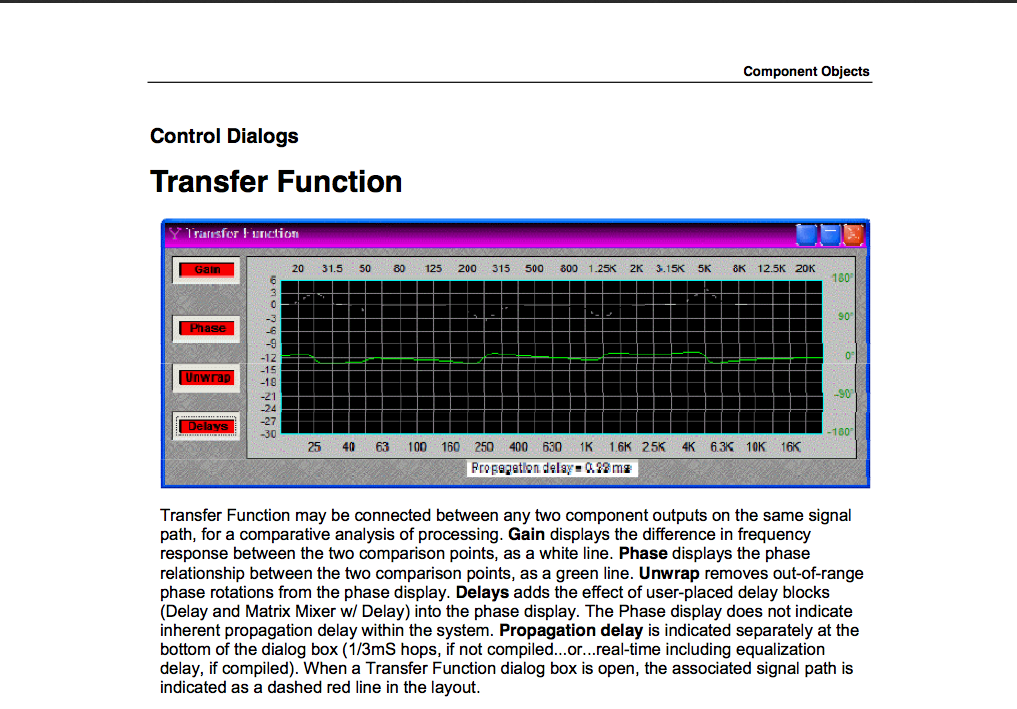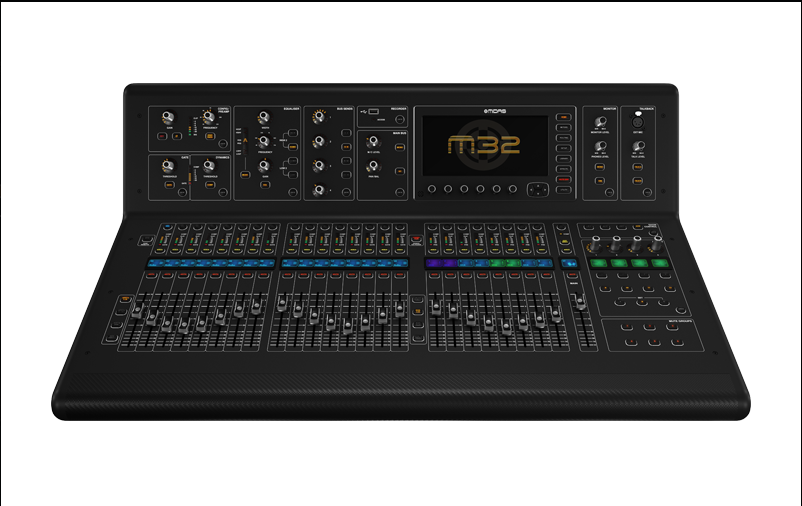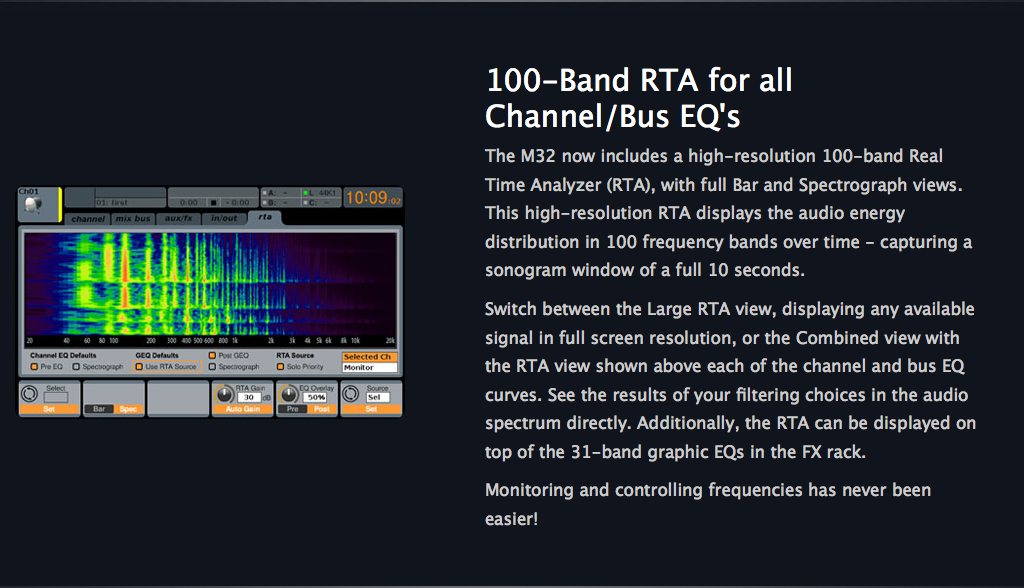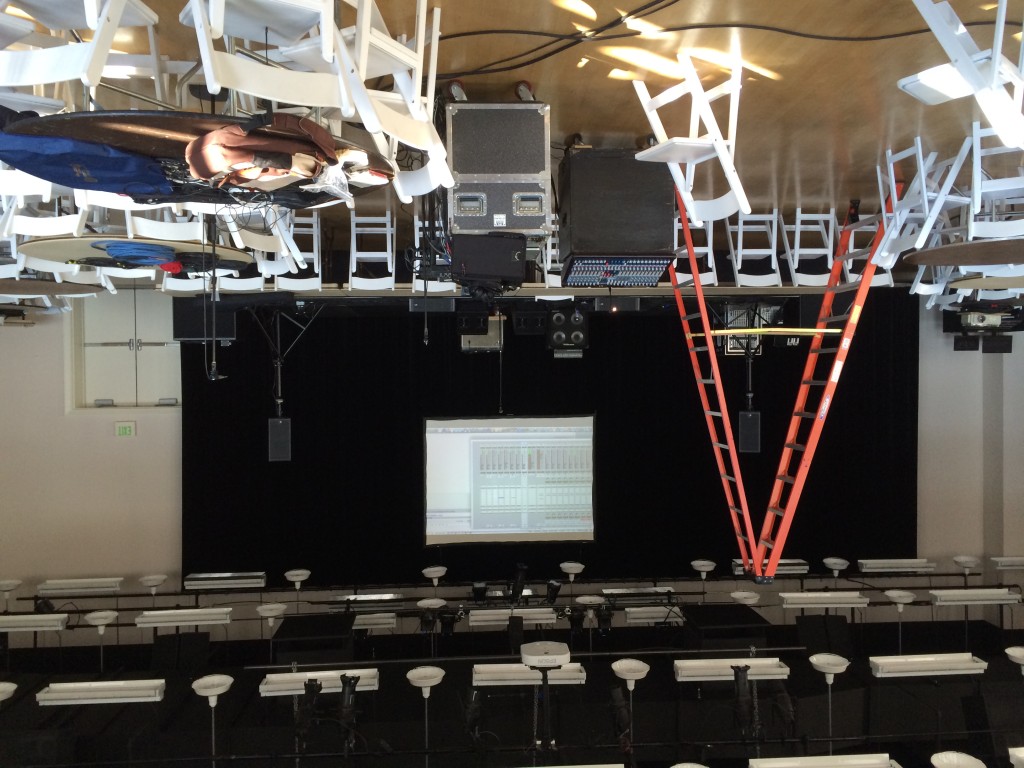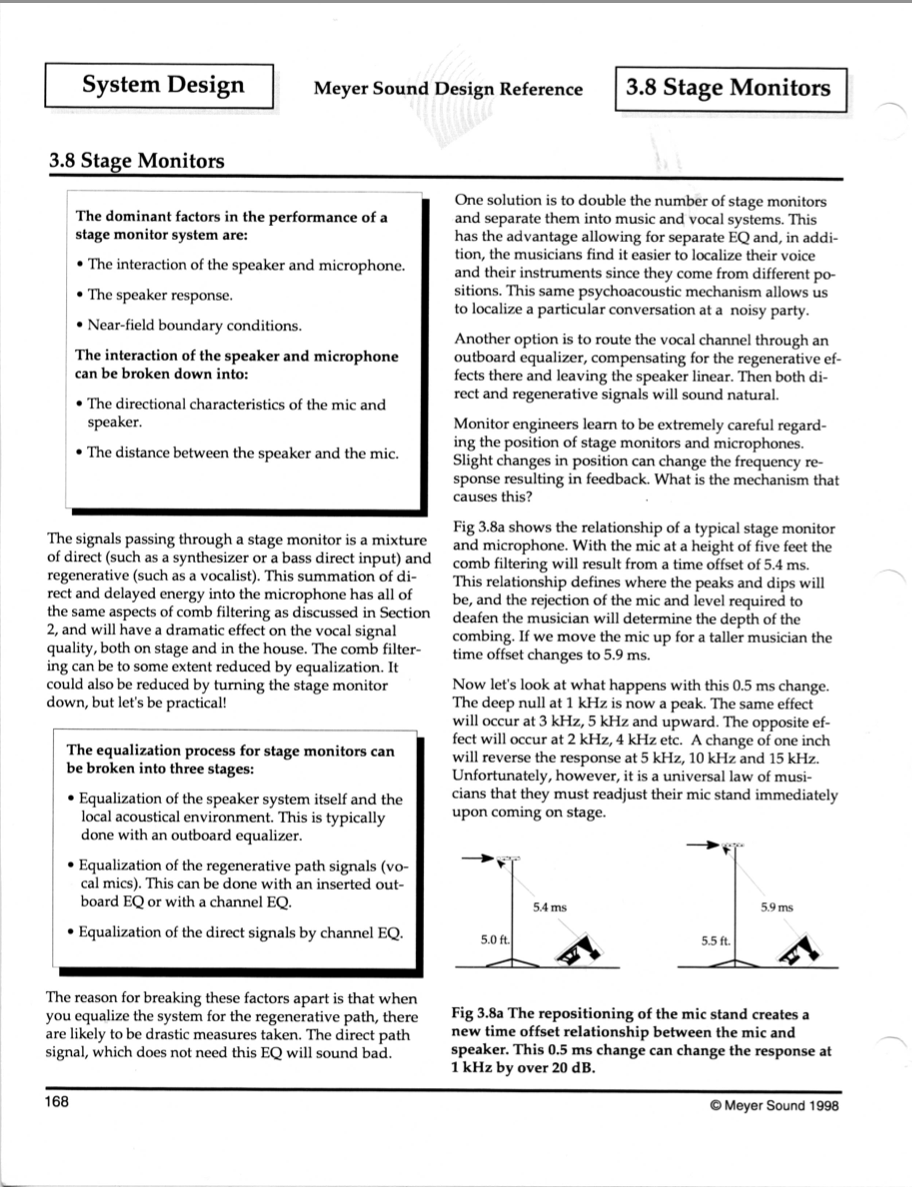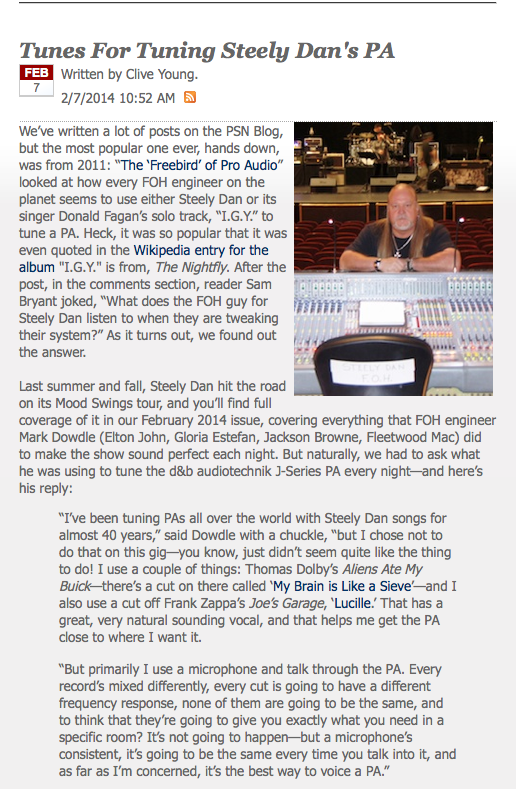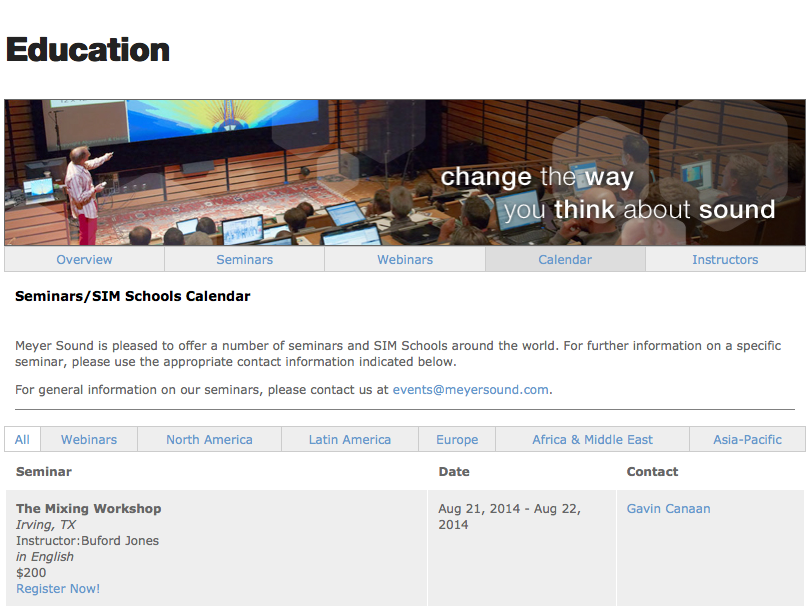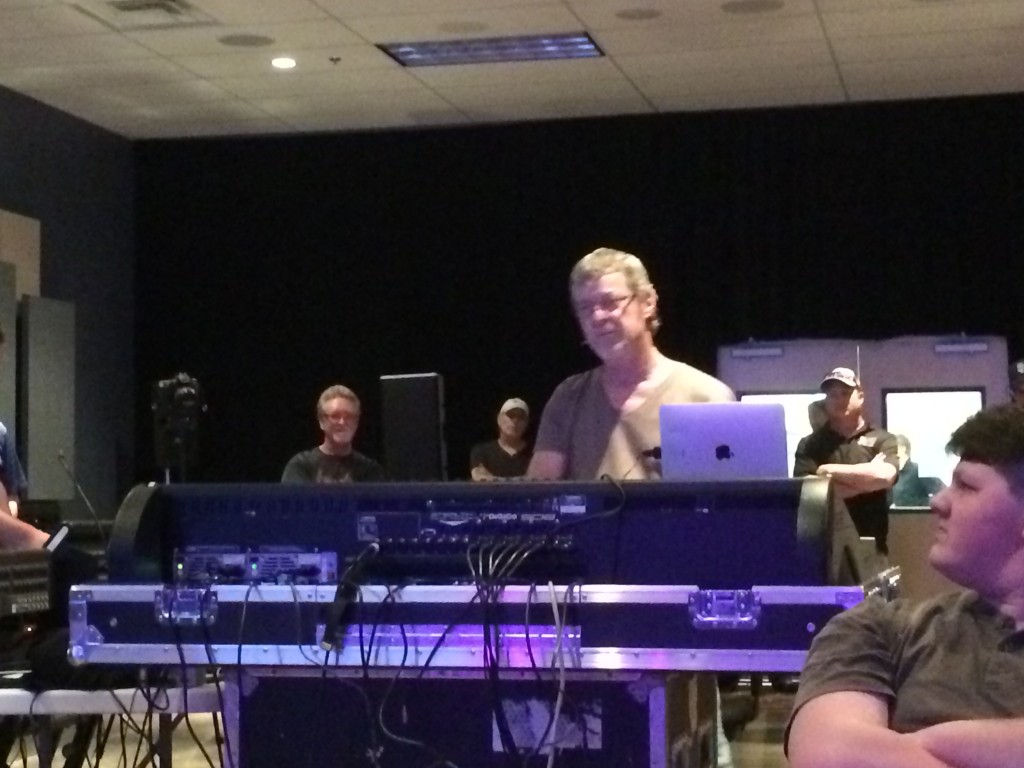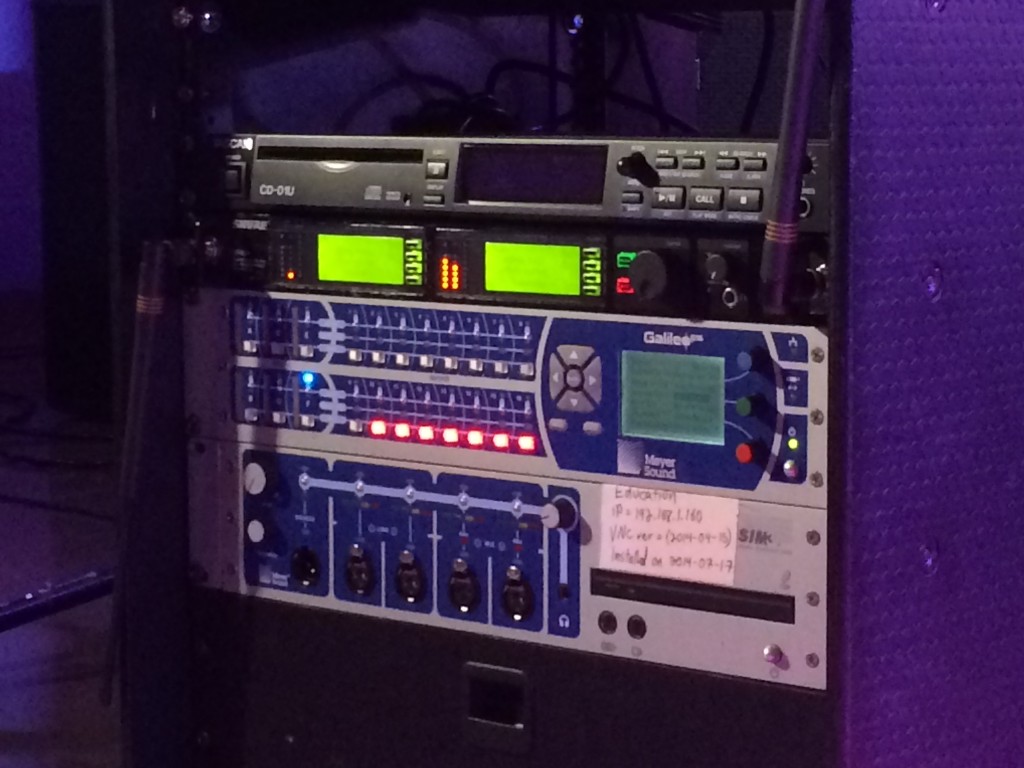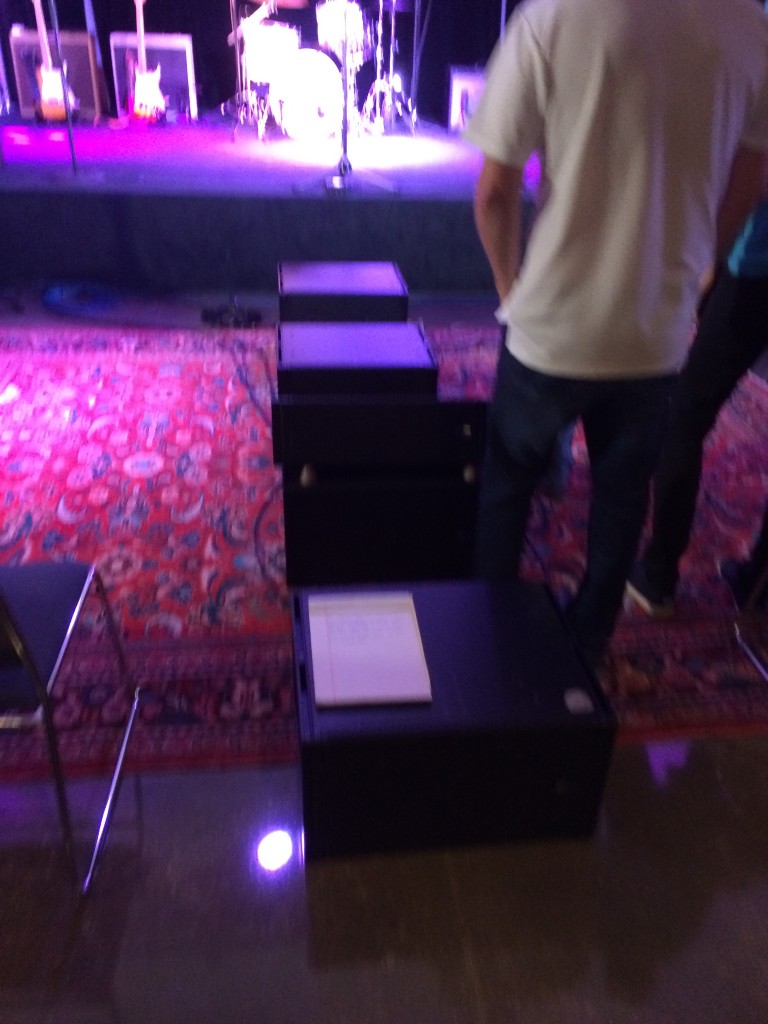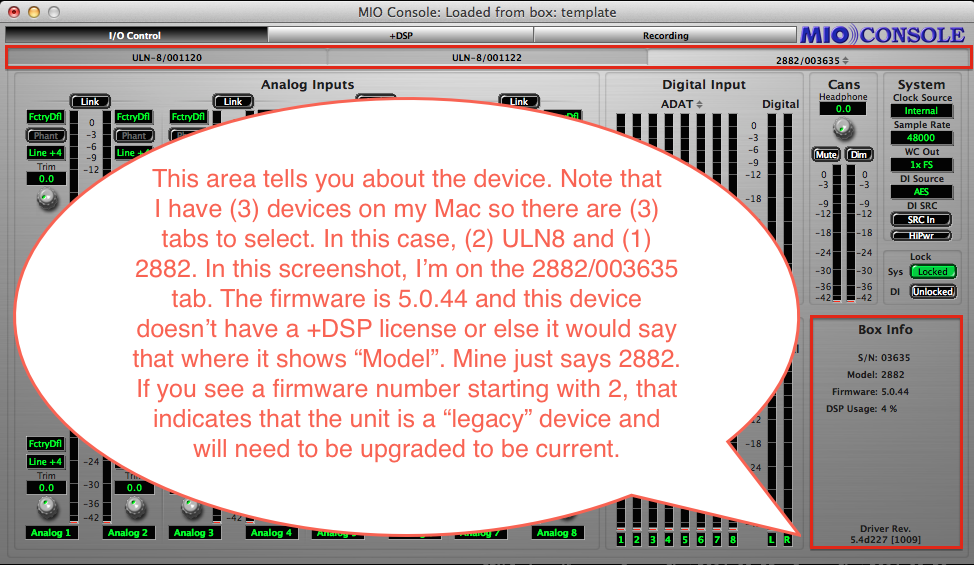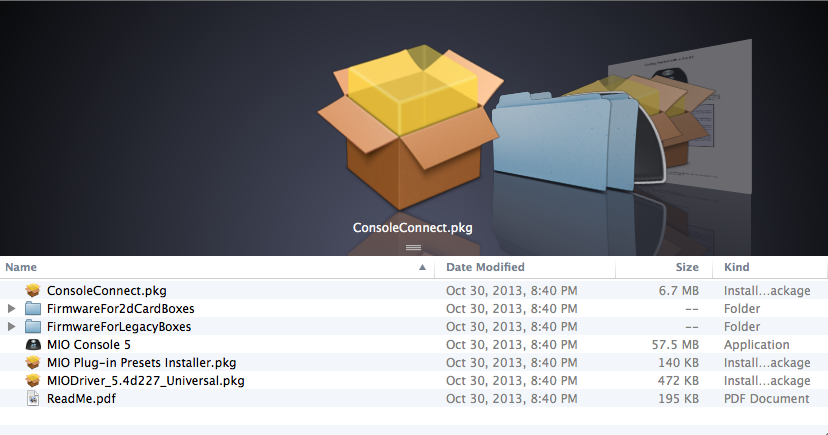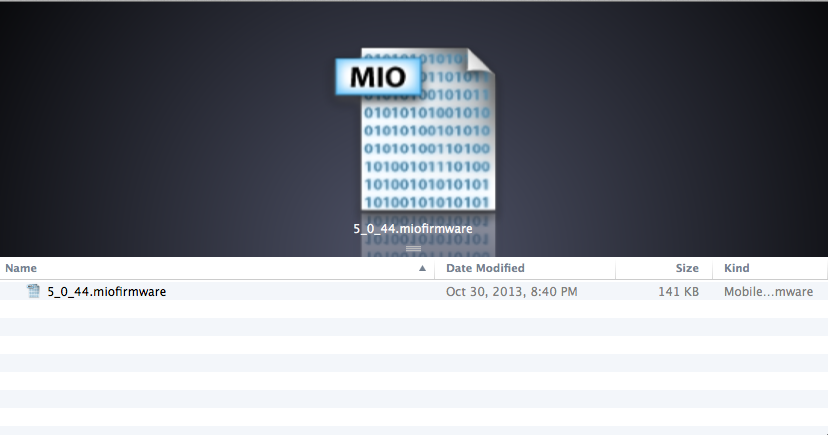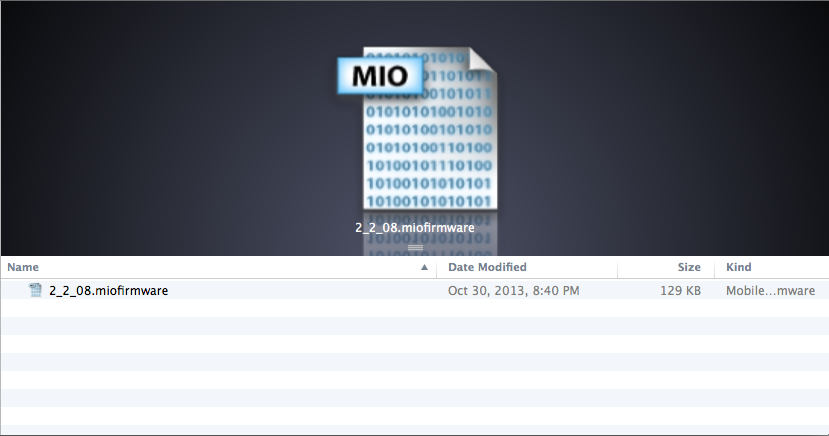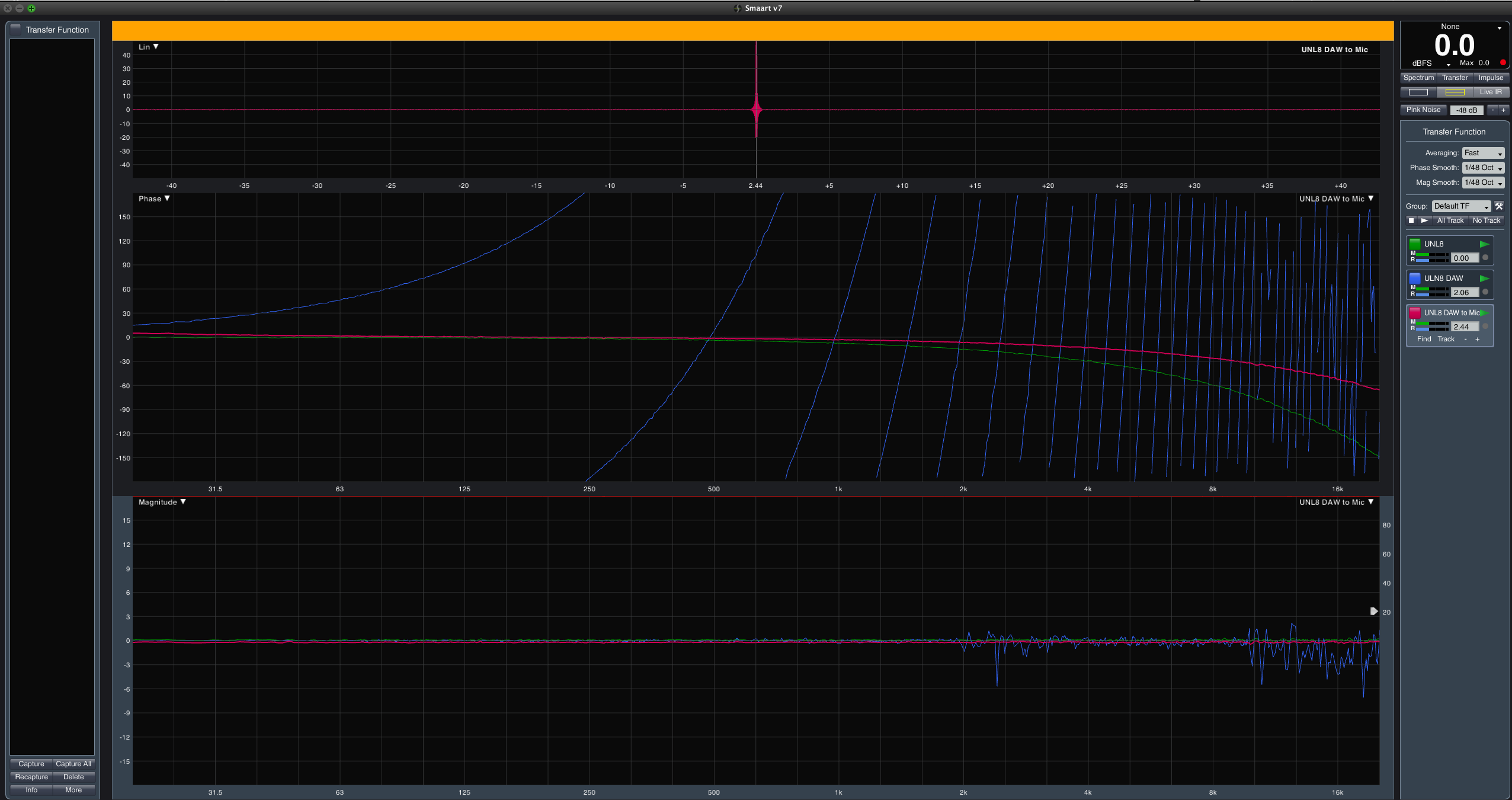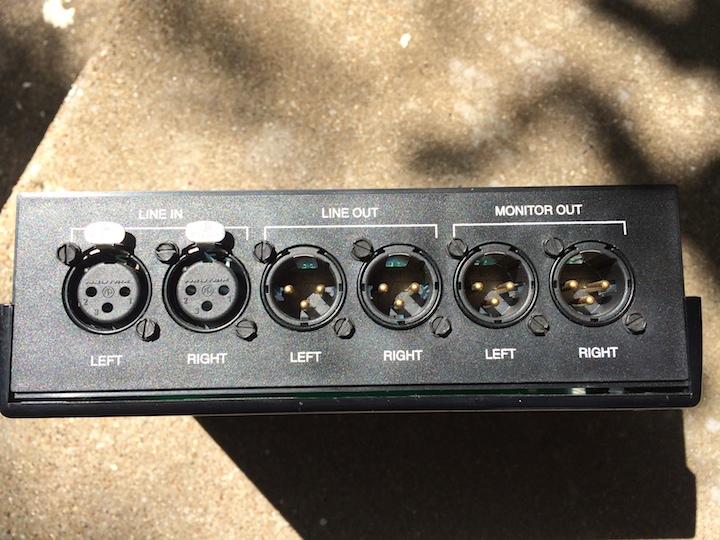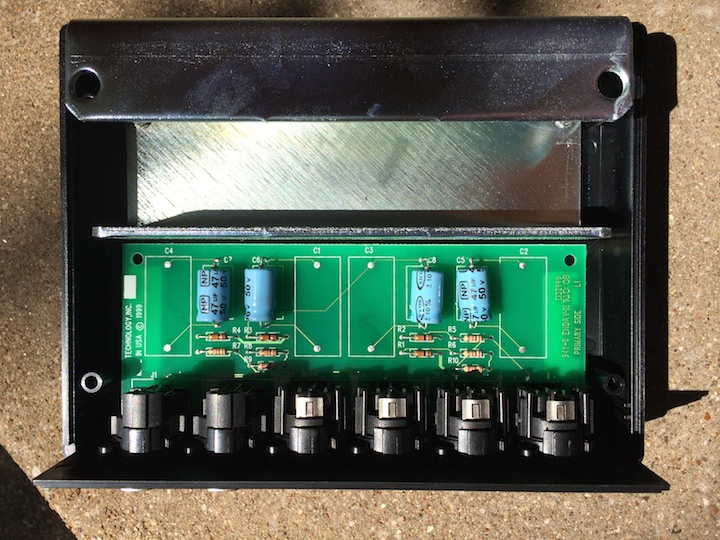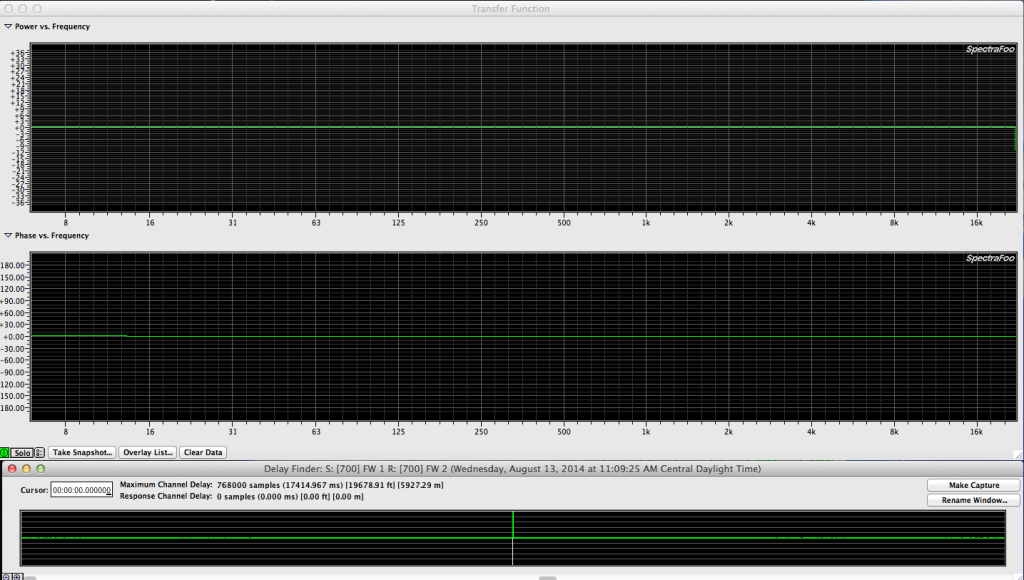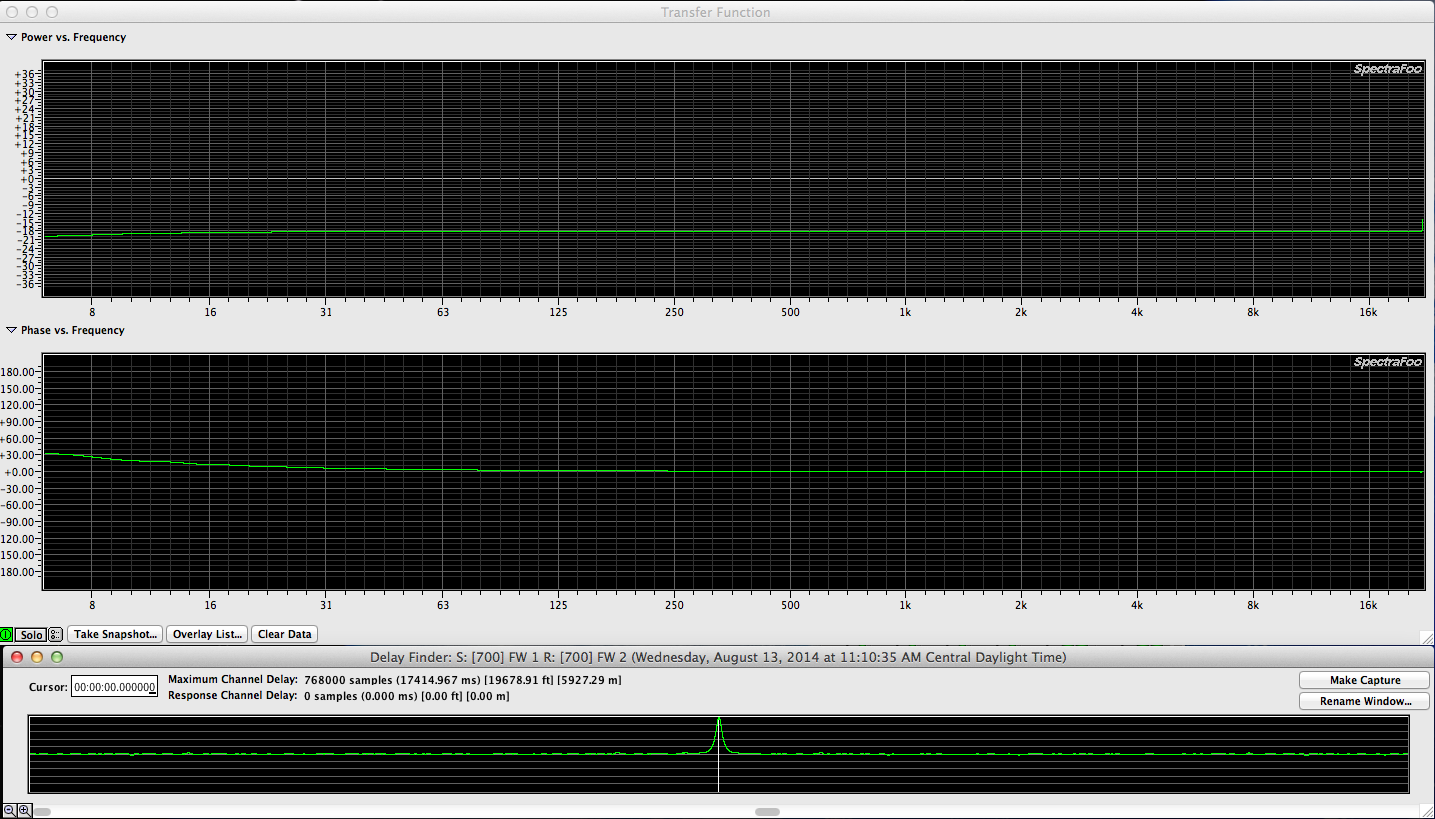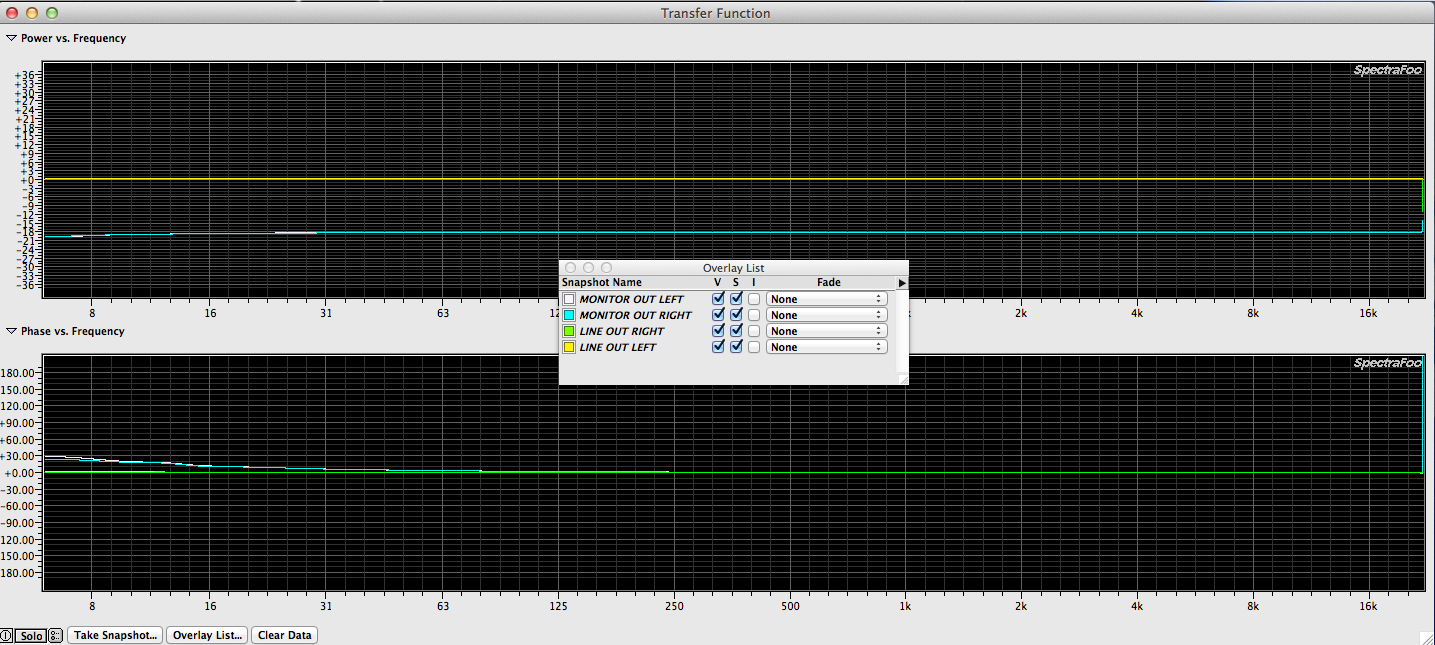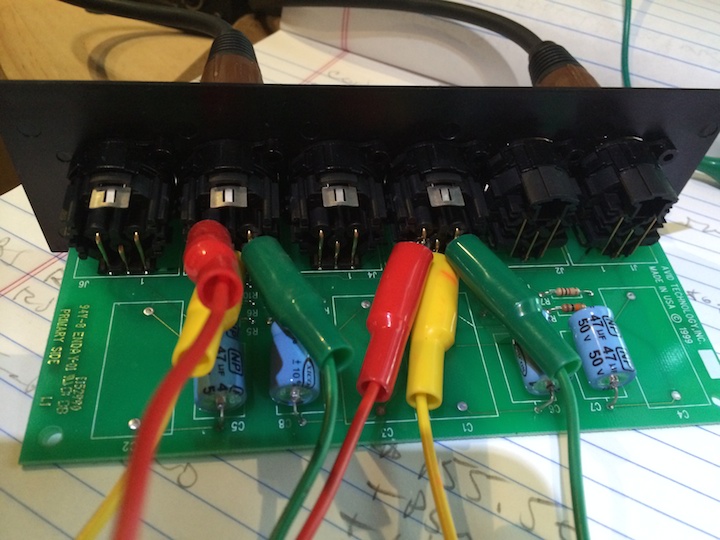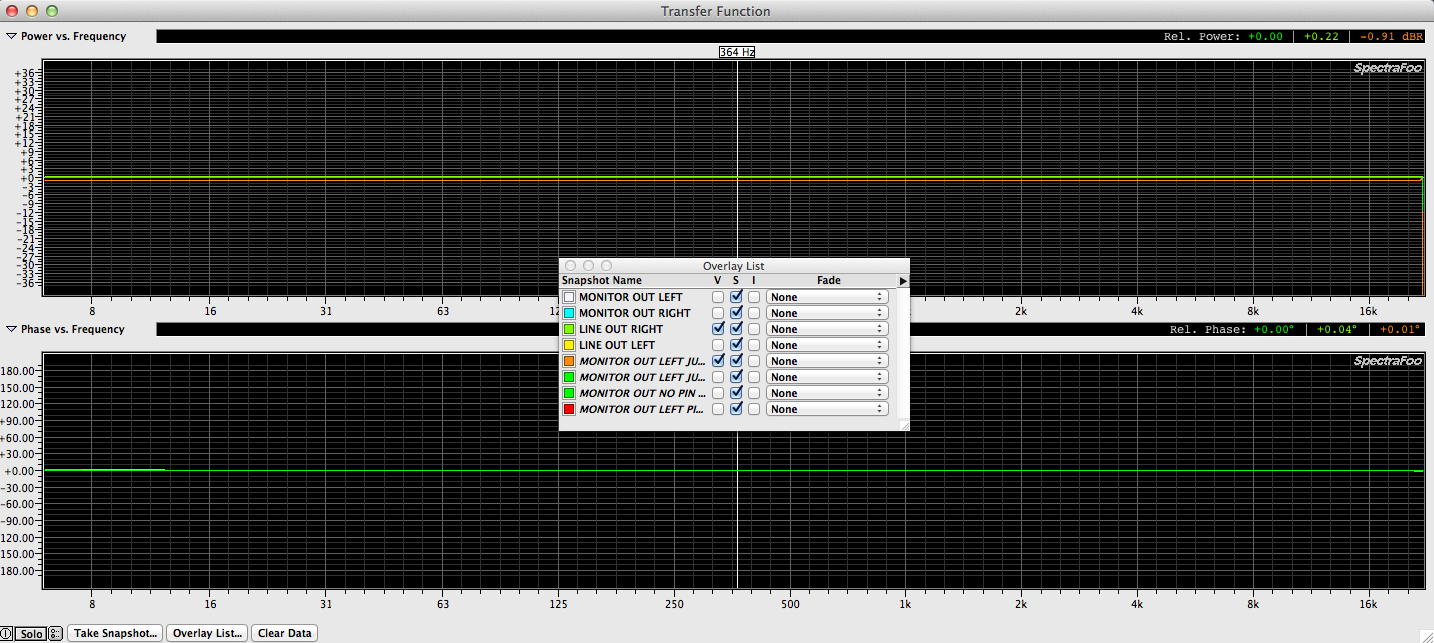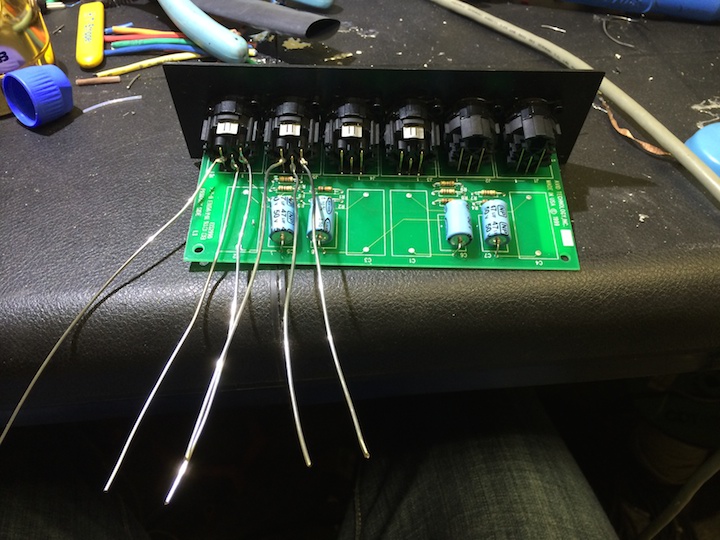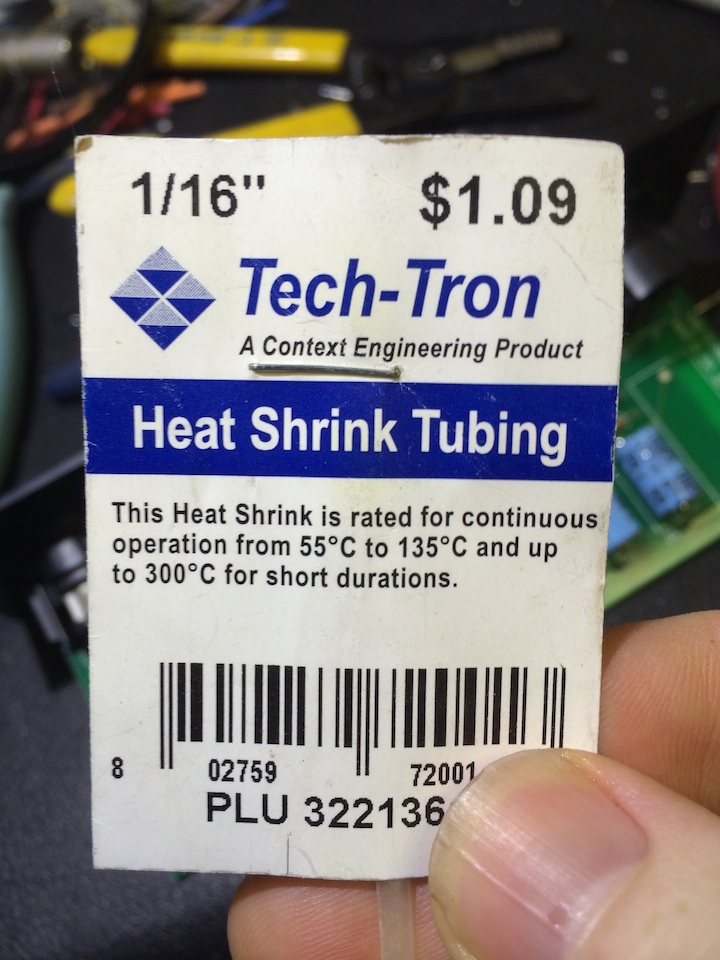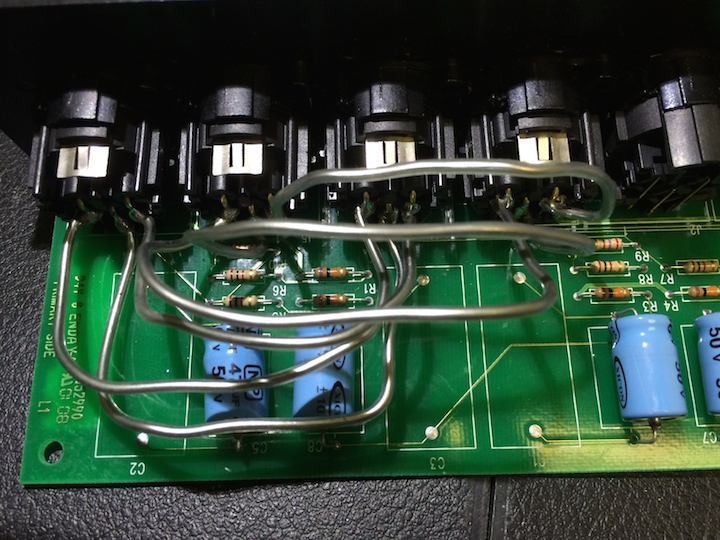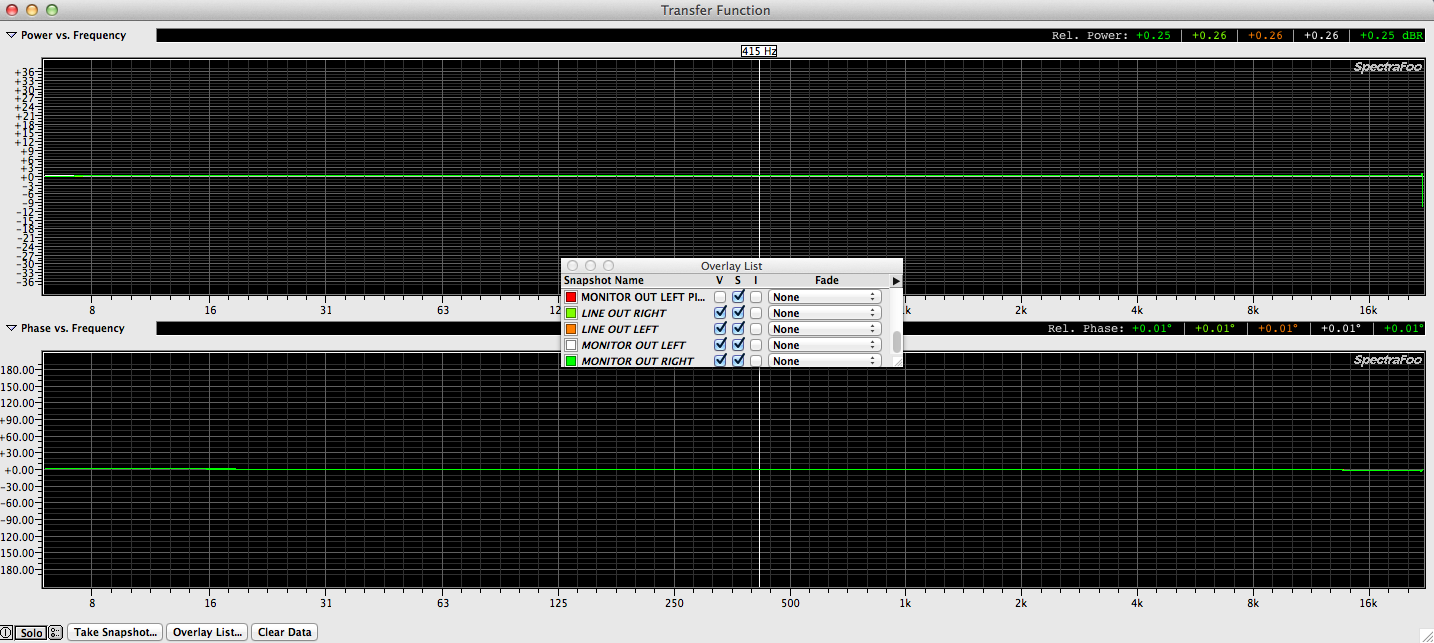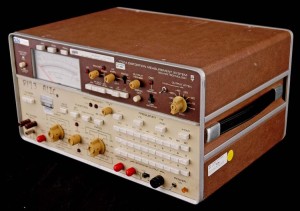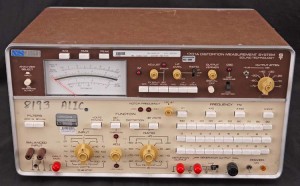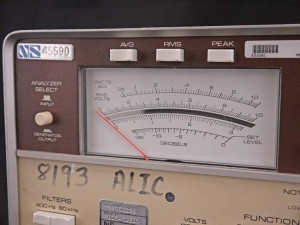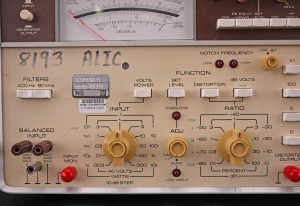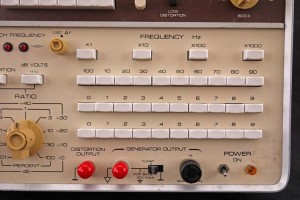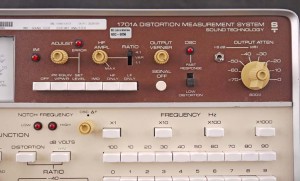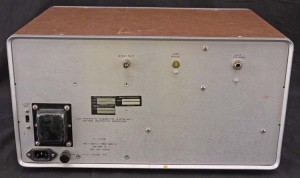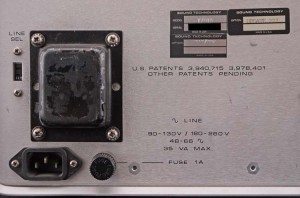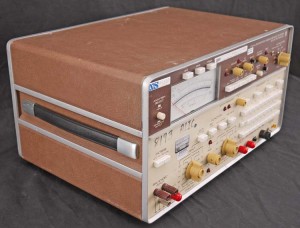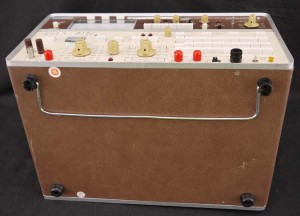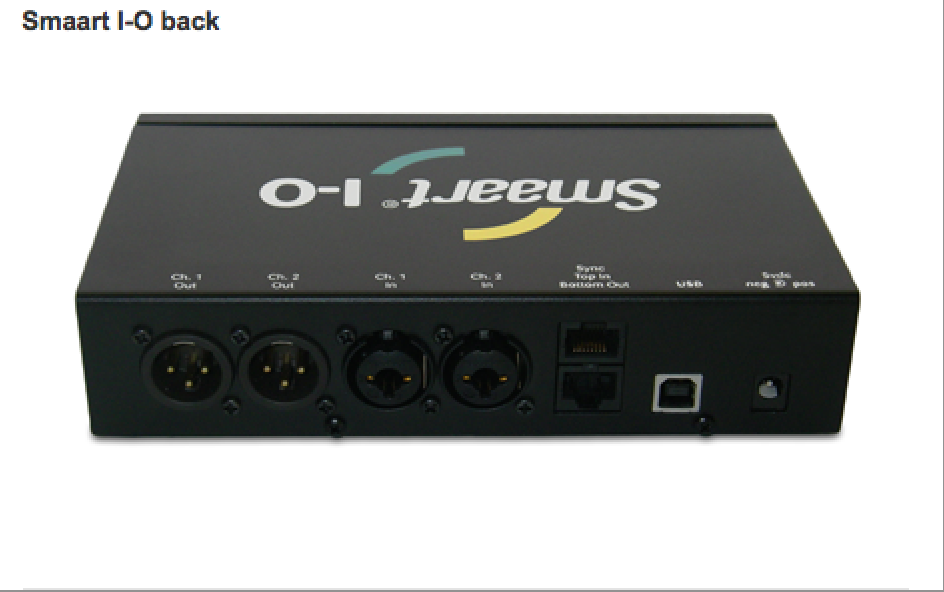I recently ran into a fellow sound engineer who works with another local sound engineer who has a medium sized JBL / Cerwin rig he uses on outdoor gigs. The rig is comprised of up to (8) JBL SR4732X 3 way boxes and (8) to (16) Cerwin Vega L36 / B36 subs although this evening rig used (6) and (6).
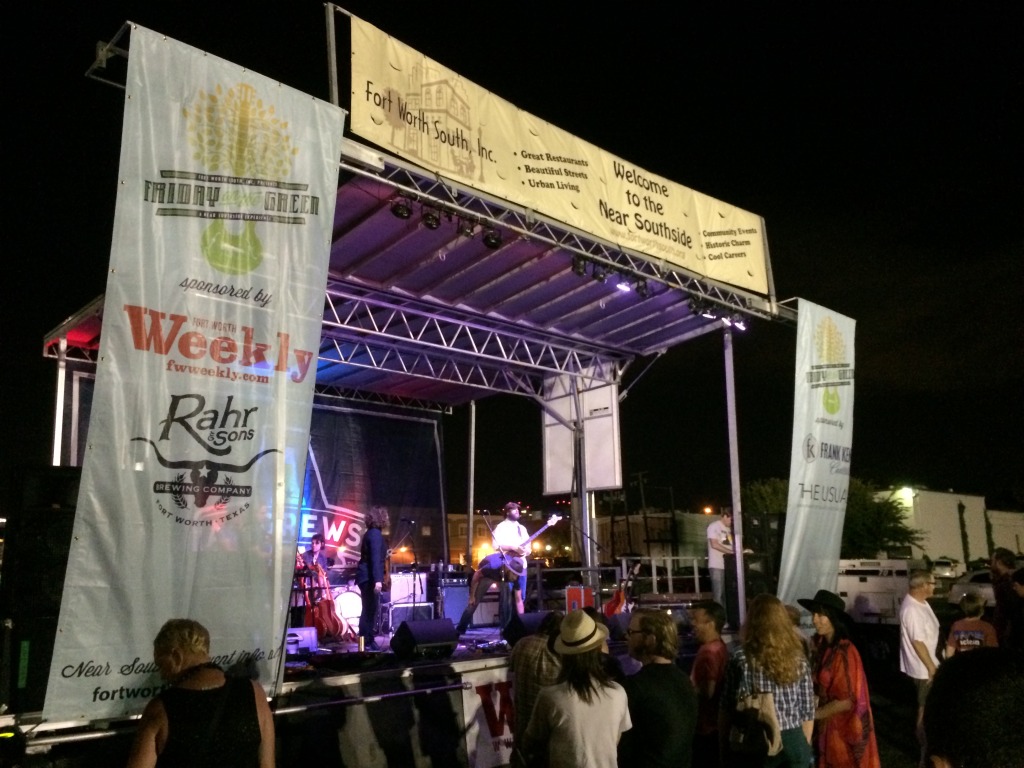
JBL SRX catalog
Cerwin Vega – L36 sub
Last time I saw the rig in action was years ago and I wasn’t paying that much attention but there were only (2) mid / high boxes per side and (2) subs per side on an outdoor event. That was probably 20 years ago.
In case it’s not already quite clear, as you add more and more boxes together, your chance for phase issues goes up exponentially if they aren’t placed and splayed correctly.
POP QUIZ:
What sounds worse than a (2) box a side PA splayed wrong?
ANSWER:
A (4) box a side PA splayed wrong!
The specs for the JBLSR4732X says that the HF horn is 90 x 50. The spec sheet also reveals that there is a UHF driver that has a 100 x 100 dispersion pattern. How do you mix 90 x 50 with 100 x 100? I’m not sure but even more important, how do you put 2, 3, or even 4 90 x 50 horns next to each other correctly? There should be a splay of approximately 35 to 45 degrees between cabinets and the final splay should be based on measurements. A 90 x 50 degree horn might really be a 92 x 48 or a 88 x 51. The splay should avoid holes in frequency response between cabinets but it should avoid overlap that causes comb filtering. The cabinets (more than 1) should be delay corrected in order to line them up. Where do you put the mic to measure the delay time between (2) cabinets that are splayed correctly? That is a question I will have to answer once I have a bit more experimentation under my belt. I will ask someone who splays similar cabinets for a living and measures their response. In the meantime, here is the way the PA was configured this evening for an outdoor show.
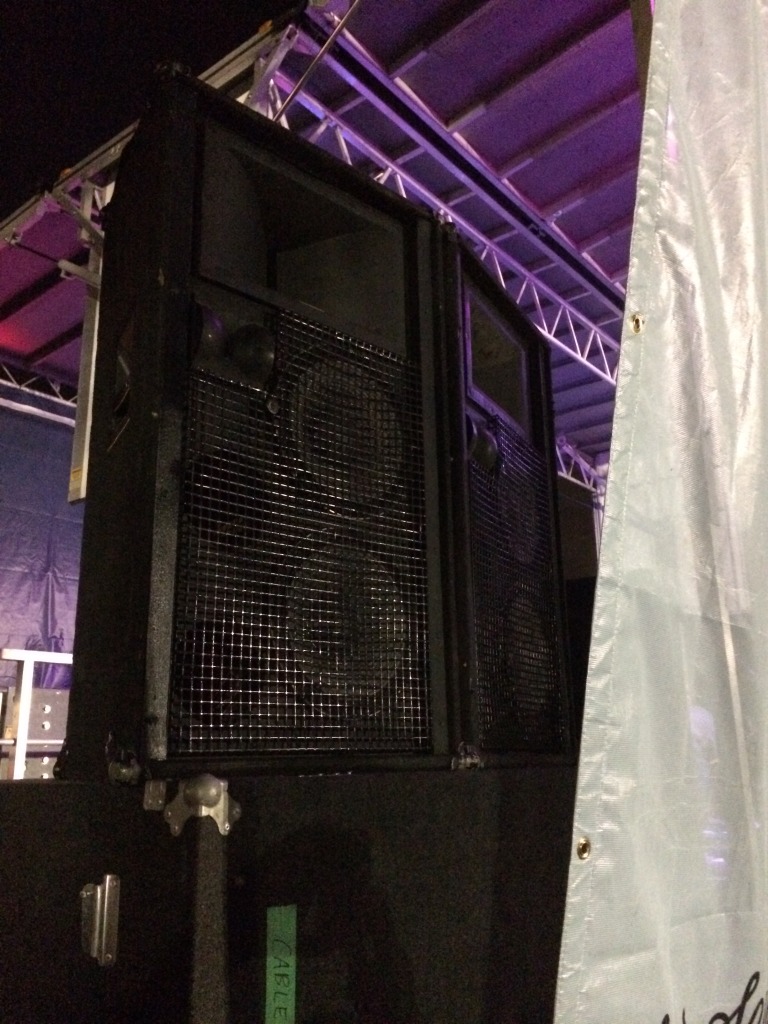
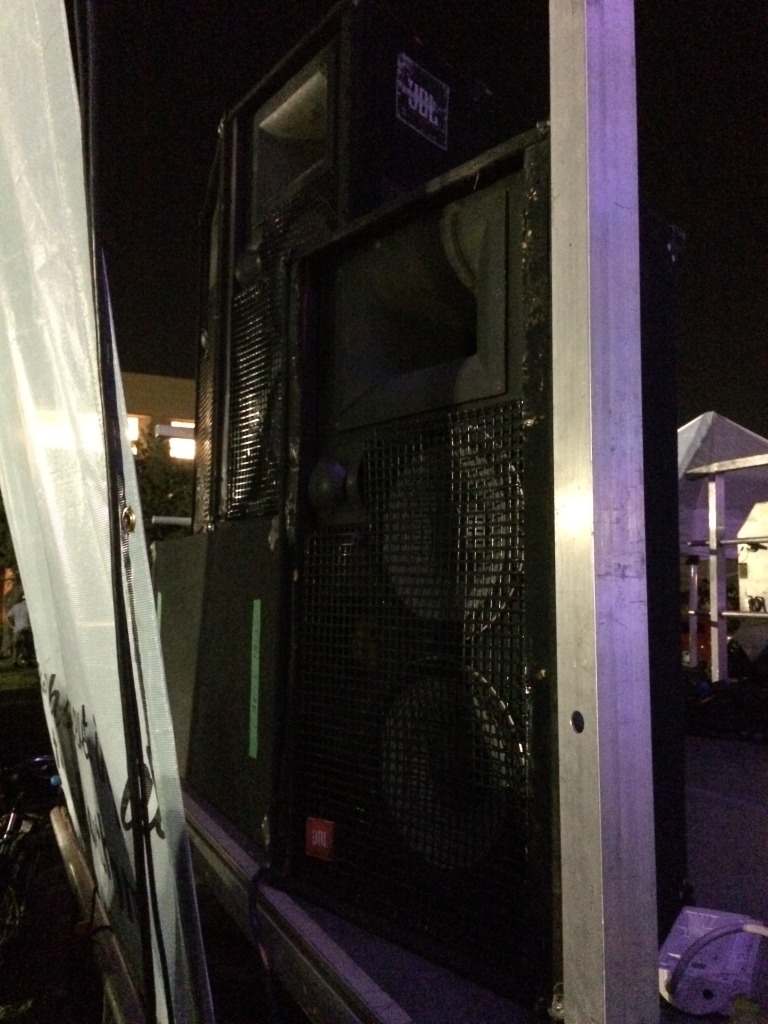
You will note that the (2) raised cabinets are “slightly” splayed but obviously not by 35+ degrees from each other. Then add in the 3rd “front fill” cabinet and you’ve basically got (3) 90 x 50 horns all aiming in the same direction.
Here is what the specs are for the MF driver:
JBL 2447J 1.5″ Titanium Horn Driver 16 Ohm
The Model 2447J is a 1.5″ exit diameter addition to JBL’s family of professional quality compression drivers. The 1.5″ exit allows the Coherent Wave™ phasing plug to directly couple with Optimized Aperture™ Bi-Radial® horns to provide lower distortion and better coverage control to 20 kHz than previous designs. In addition to improving performance, the 1.5″ exit design also reduces size and weight. The Coherent Wave phasing plug structure has four equal length passages to provide in-phase summation of diaphragm output at the 1.5″ exit. This optimized configuration produces coherent acoustical power up to much higher frequencies than more conventional designs. The diaphragm design includes JBL’s exclusive three-dimensional diamond pattern surround tuned to reduce fatigue-inducing stresses in the membrane and support structure. This provides predictable normal resonance modes, and radial reinforcing ribs increase diaphragm stiffness. This diaphragm design combined with the Coherent Wave phasing plug increases the 2447’s output in the 5 kHz to 20 kHz range.
High temperature voice coil former materials and adhesives enable the 2447J to handle high power levels over extended periods of time. The voice coils themselves are identical to previous JBL models, so that impedance and network matching will be the same. After manufacture, the frequency response of each transducer is tested for conformity to JBL’s rigid performance standards. The model 2447J is ruggedly constructed to withstand the rigors of both fixed installations and touring applications. All tolerances are held to the same high levels traditionally associated with JBL designs. The JBL manufacturing process permits the use of rim-centered diaphragms for instant interchangeability and ease of field service.
Specifications: • 100 watts continuous above 500 Hz, 150 watts continuous above 1 kHz • Voice coil diameter: 4″ • Frequency range: 500-20,000 Hz • Sensitivity: 112 dB (1W/1m on 2352 horn) • Nominal impedance: 16 ohms • Net weight: 23.5 lb. • Dimensions: 9-1/4″ dia. x 4″ depth.
Product Specifications
Mounting Type4-Bolt
Exit Diameter1.5″
Diaphragm MaterialTitanium
Impedance16 ohms
Power Handling (RMS)150 Watts
JBL 2447J 1.5″ Titanium Horn Driver 16 Ohm
BrandJBL
Model2447J
Part Number294-438
UPC844632066894
Product CategoryHorn Drivers
Unit of MeasureEA
Weight26.5 lbs.
Here are the specs for the HF driver
Professional Series
Key Features:
Bi-Radial
®
Constant-Coverage
horn design
Constant 100° x 100° dispersion
from 3 kHz to 20 kHz
40 watts continuous program
3 kHz to 21.5 kHz response
Annular-ring diaphragm ferrite
motor structure
44 mm (1
3/4
in) edgewound
aluminum ribbon voice coil
105 dB sensitivity, 1 W, 1 m (3.3 ft)
2404H
Designed for use as an ultra-high
frequency driver in multi-element,
full range loudspeaker systems, the
JBL Model 2404H delivers an un-
matched combination of wide, tightly
controlled dispersion, extended fre-
quency response, high power capac-
ity, and high efficiency
One key to this outstanding perfor-
mance lies in the unique geometry of
the driver
’
s Bi-Radial horn
¹
Devel-
oped with the aid of the latest compu-
ter design and analysis techniques, the
horn provides constant coverage from
its recommended crossover point of
3 kHz to beyond 20 kHz. The Bi-Radial
compound flare configuration main-
tains precise control of the horn
’
s
wide 100° x 100° coverage angle, and
the horn
’
s rapid flare rate dramatically
reduces second harmonic distortion.
The uniform coverage of the horn is
illustrated by the detailed polar data
and the isobar (constant sound pres-
sure) contours included in this speci-
fication sheet. The polar curves of the
2404 exhibit soft-edge pattern charac-
teristics, due to the gradual drop-off of
level with increasing off-axis angle.
Here is an interesting thread about the JBL SR4732X boxes HF characteristics.
Live Sound Int forum – JBL SR4732X crossover quesiton (long)

